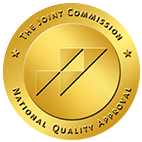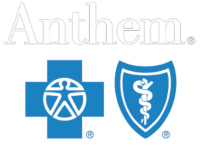



Adderall is a mixture of amphetamine and dextroamphetamine. These are two drugs that enhance the effects of neurotransmitters inside the nervous system. A person experiences stronger doses of dopamine, which can improve their focus.
Adderall is a common prescription for people who have ADHD or narcolepsy. It can have strong benefits for these people. Some people without ADHD report feeling more focused and energetic after taking Adderall.
Yet Adderall can have substantial side effects, even if a person does not consume alcohol with it. An individual may have trouble sleeping or organizing their thoughts.
Stimulating the nervous system means increasing pressure on the respiratory and cardiovascular systems. Someone may experience heart palpitations or problems with their blood circulation. This can lead to a heart attack or stroke, especially in people with pre-existing heart problems.
Adderall is also extremely addictive. Dopamine raises a person’s mood, so a person naturally wants to consume substances that give them dopamine. An individual may take higher amounts of the drug over time, increasing their risks of side effects.
Not all people who take Adderall will develop an addiction. Most people who develop an addiction use the drug recreationally or fail to follow their doctor’s advice.
Alcohol is a nervous system depressant. It can contract tissues inside the brain, slowing the heart and lung functions down.
Even one drink can have a significant impact on the body. Alcohol can impact the brain just seconds after the first sip of it. It can change a person’s mood and inhibit their balance.
In larger doses, alcohol can cause damage to the digestive system. A person can suffer from a blackout after four or five drinks in a few hours. Experiencing multiple blackouts can cause permanent memory loss and brain damage.
Chronic alcohol use can increase a person’s risk for cancer and heart disease. The damage alcohol does to their lungs increases their chances for pneumonia and other lung infections.
Alcohol is addictive because of how it changes the brain. Over time, someone may become dependent on alcohol in order to feel pleasure. Alcohol withdrawal can be extremely painful, with some cases leading to complications like delirium tremens.
Some people may mix Adderall and alcohol consciously. They may be experimenting with the combination, seeing how the two work together.
The experience of being on Adderall can be a little overwhelming. Someone may take the drug and then drink alcohol to reduce its effects or calm themselves down.
Other people may take Adderall and then drink alcohol without thinking about it. They may notice its effects and decide to keep combining the two together.
Someone may also drink alcohol first and then take Adderall. Taking the medication afterward can dull their feelings of intoxication. They may believe that the effects of alcohol are reduced, allowing them to drive and talk with others.
The World Federation of ADHD has concluded that people with ADHD are at least twice as likely to develop alcohol addictions than people without it. This may be due to self-medication. Someone may drink alcohol in order to slow their symptoms down, mixing in Adderall by mistake.
The effects of Adderall and alcohol can clash. Adderall is a stimulant while alcohol is a depressant.
A person’s brain may struggle to reconcile between the two. This can cause someone to go into a seizure, especially if they have a condition like epilepsy.
Alcohol may increase the effects of Adderall substantially. Someone’s heart and breathing rates may skyrocket, which can increase the risk of a cardiac arrest. Adderall may cause someone to feel drunker, preventing them from walking or thinking clearly.
A person cannot predict how mixing Adderall and alcohol will affect them. Some people may feel little to no effect from consuming Adderall and alcohol together. This may encourage them to take other drugs like cocaine in order to feel high, which can lead to problems.
Snorting the drug or mixing it into the alcohol does not dilute the effects of Adderall. Snorting can damage nasal cavities and the respiratory system. This can lead to significant lung damage by itself, and alcohol can damage the lungs further.
A doctor may recommend that someone stay on Adderall for a long period of time. If they use it responsibly, the benefits outweigh the costs.
Most people who take it start on low dosages. As they build a tolerance to it, they take bigger dosages with their doctor’s oversight.
They always take the smallest dosage necessary to achieve important effects. Adderall can cause effects on the body at dosages as small as five milligrams.
No one should increase their dosage without their doctor’s consent. If they miss a dose, they should take it as soon as possible. But if they are close to their next scheduled dose, they should take the next one on schedule without taking two pills at once.
One dose of Adderall remains in the bloodstream for up to 46 hours after the last use. This means that someone may feel the effects of the drug for nearly two days. Anyone who takes Adderall should avoid drinking any alcohol while they are on it.
Someone who has problems with Adderall and alcohol should seek immediate help. They can contact someone online, call their doctor, or speak to a friend.
Someone with ADHD who has addictions should pursue dual diagnosis treatment. They will receive diagnoses for the substance abuse disorders that they face.
They will then receive treatment for ADHD and their substance abuse disorders. A person can take new ADHD medications, including ones that do not stimulate the nervous system. Therapies that help with ADHD like cognitive behavioral therapy can also apply to drug addiction.
Someone without ADHD can receive two diagnoses of substance abuse disorders at once. They can also go through screening to see if they have another behavioral health disorder. They may not have ADHD, but they may have depression or an anxiety disorder.
Once a person goes through detoxification, they can begin inpatient therapy. Talk therapy tends to help many people.
A person can get to the roots of why they use drugs. Someone may be trying to escape pain or socialize better with others. Once they understand why they use drugs, they can come up with new ways of coping and socializing.
Organized activities can help someone learn life skills and express themselves. Art therapy allows a person to make art that tells their own life story. They learn a healthy and productive way to deal with stress and escape from the world around them.
Treatment is individualized. A person works with their doctor on therapies that would help them. They can choose new therapies to try out and transition out of old ones when they don’t work.
Treatment does not end once someone leaves a treatment center. If they want a new space to live in, they can go to sober housing. Removing a person from the places they used to drink in can reduce the chances of relapsing.
They can continue to go to therapy sessions, including group therapy. If a person relapses, their center can welcome them back and help them continue their recovery journey.
Mixing Adderall and alcohol can be dangerous. Adderall revs the nervous system up, but alcohol slows the nervous system down. Each can have its own devastating effects.
Someone may combine the two substances accidentally or out of a desire to experiment. They can suffer from a seizure, cardiac arrest, or traumatic accident.
A person with ADHD and a substance use disorder should seek dual-diagnosis treatment. Treatment can include talk and activity therapies that bolster life skills.
The journey to recovery requires one step. New Method Wellness serves the San Juan Capistrano area. Contact us today.
Handpicked by Dr. Phil, New Method Wellness is a premier dual diagnosis addiction treatment center dually accredited by The Joint Commission. It has been singled out as one of the best drug and alcohol rehab centers in America, offering a unique 3:1 staff-to-client ratio that pairs every client with two therapists instead of one.
At New Method Wellness, we add another dimension to dual diagnosis treatment, and that is the integration of holistic therapy, such as massage/acupuncture therapy, equine therapy, and art therapy. As addiction therapists and substance abuse counselors work with clients to treat the substance use disorder and the co-occurring illness associated with it, holistic therapy adds meaning to life after treatment and sustains long-term recovery. Our 3:1 staff-to-client ratio ensures client success after treatment, as evidenced by our Extended Aftercare program.
For more information about New Method Wellness’s treatment programs, call (866) 951-1824
From all of us at New Method Wellness co-occurring treatment center, we wish you peace and serenity in knowing that you or your loved one will get the necessary help.
ACCREDITED BY:




"*" indicates required fields
LOCATION
QUICK LINKS
TREATMENT PROGRAMS
RESOURCES
Privacy Policy | Sitemap – © 2025 New Method Wellness
New Method Wellness Is Not Affiliated With, Employed By, Or In Contract With Any Treatment Centers Or Providers.
We Do Not Accept Or Pay Any Fees Or Payments For Behavioral Health Referrals.
We Are Here To Support Families. This Is Our Focus.
"*" indicates required fields
"*" indicates required fields